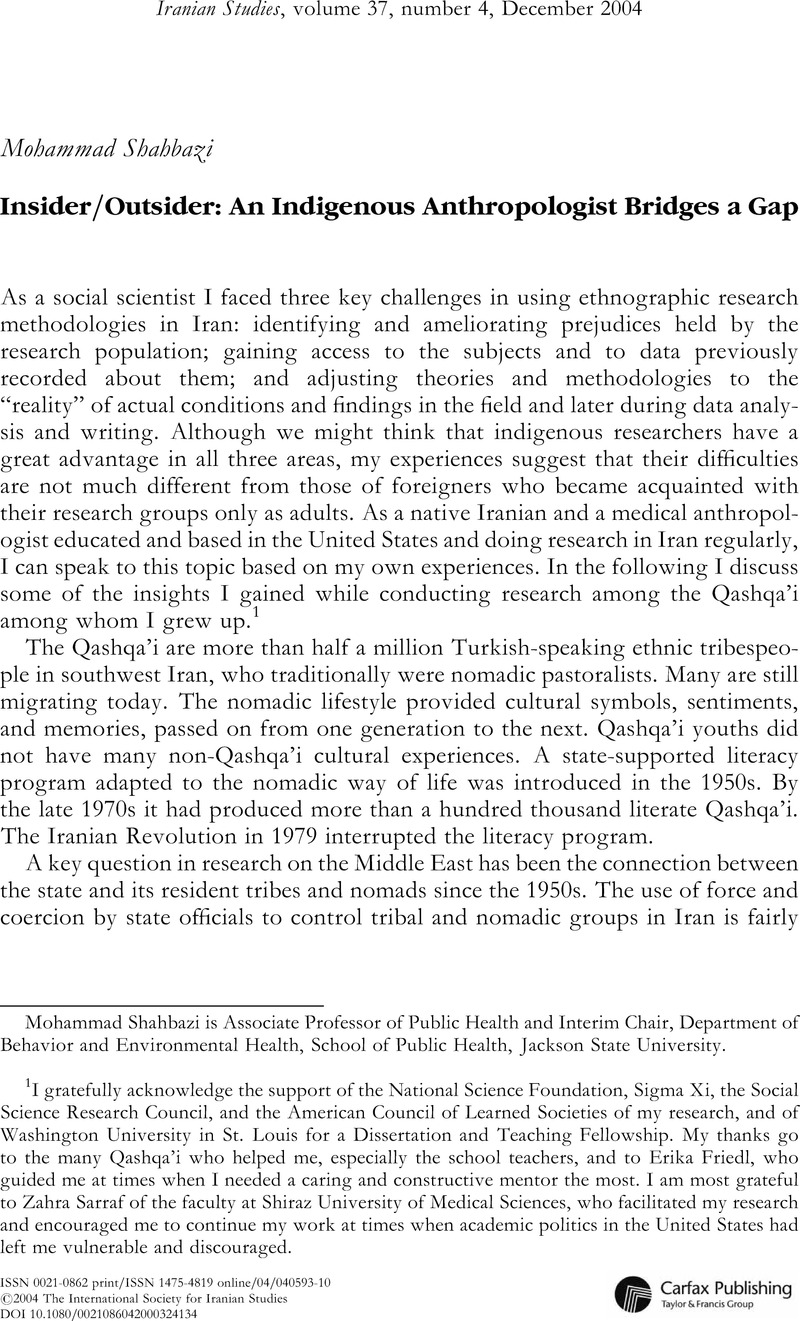Published online by Cambridge University Press: 01 January 2022

1 I gratefully acknowledge the support of the National Science Foundation, Sigma Xi, the Social Science Research Council, and the American Council of Learned Societies of my research, and of Washington University in St. Louis for a Dissertation and Teaching Fellowship. My thanks go to the many Qashqa'i who helped me, especially the school teachers, and to Erika Friedl, who guided me at times when I needed a caring and constructive mentor the most. I am most grateful to Zahra Sarraf of the faculty at Shiraz University of Medical Sciences, who facilitated my research and encouraged me to continue my work at times when academic politics in the United States had left me vulnerable and discouraged.
2 For example, L. Beck, The Qashqa'i of Iran, (New Haven, 1986); Garthwaite, G., “Tribes, Confederation and the State: A Historical Overview of Bakhtiyari and Iran,” in The Conflict of Tribe and State in Iran and Afghanistan, ed. Tapper, R. (London, 1983)Google Scholar.
3 For details see Shahbazi, M., “Formal Education, Schoolteachers, and Ethnic Identity among the Qashqa'i of Iran” (Ph.D. diss., Washington University, 1998)Google Scholar.
4 Mottale, M. M., Iran: The Political Sociology of the Islamic Revolution (New York, 1995): 1Google Scholar.
5 This was the Dar al Fonnun, established in 1851 by Amir Kabir. See Menashri, D., Education and the Making of Modern Iran (Ithaca, 1992): 53Google Scholar; Mottahedeh, R. P., The Mantle of the Prophet: Religion and Politics in Iran (New York, 1985): 51Google Scholar.
6 I heard this from faculty members at Shiraz University in interviews I conducted in 1995.
7 See also Janesick, V. J., “The Dance of Qualitative Research Design: Metaphor, Methodology, and Meaning,” in Handbook of Qualitative Research, ed. Denzin, N. K. and Lincoln, E. (Newbury Park, 1994): 209–219Google Scholar.
8 Barth, F., “Introduction,” in Barth, F., Ethnic Groups and Boundaries (Boston, 1969)Google Scholar.
9 Spradley, J. P., Participant Observation (New York, 1979)Google Scholar; Bruce, G. et al., “Standards for Contextualization of Interpretive Research: A Melanesian Case,” International Journal of Science Education 21 (1999): 249–260Google Scholar.